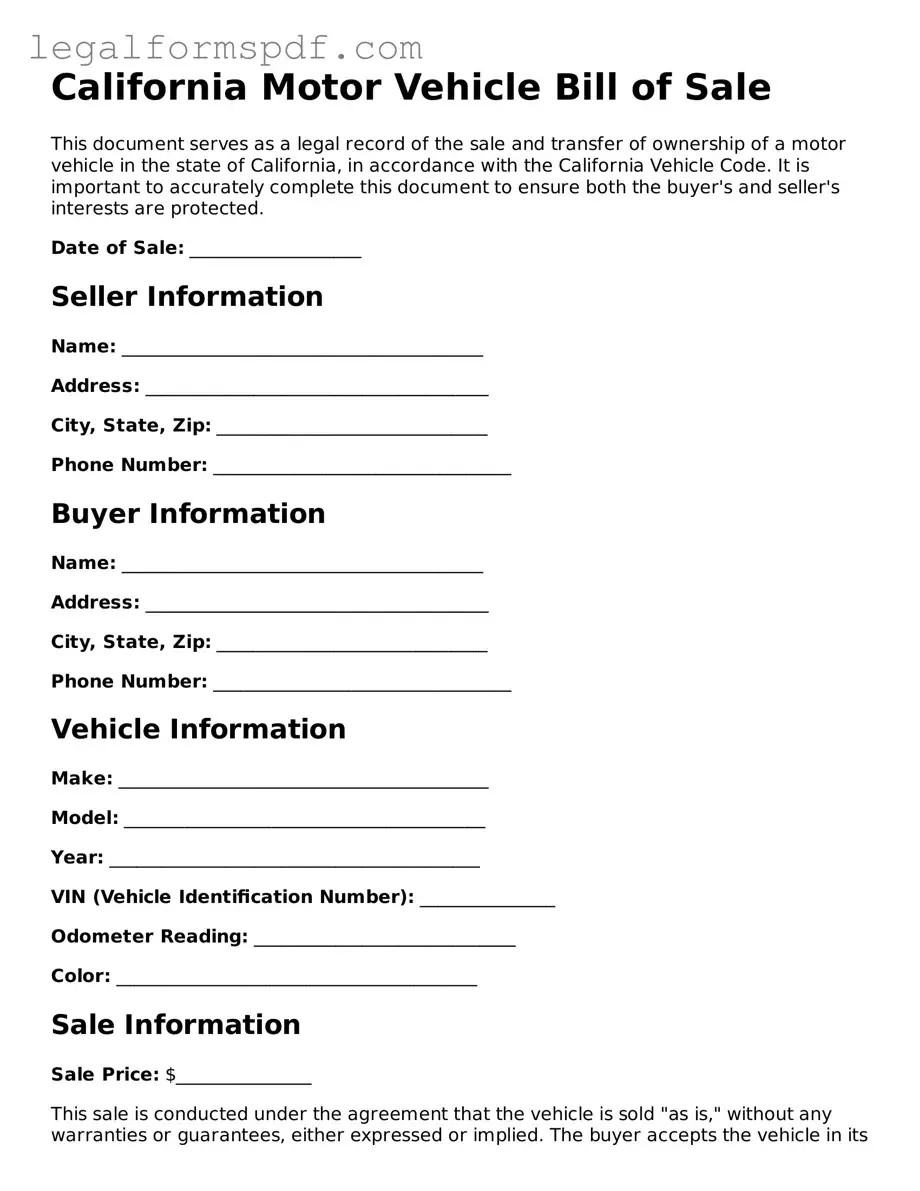California Motor Vehicle Bill of Sale
This document serves as a legal record of the sale and transfer of ownership of a motor vehicle in the state of California, in accordance with the California Vehicle Code. It is important to accurately complete this document to ensure both the buyer's and seller's interests are protected.
Date of Sale: ___________________
Seller Information
Name: ________________________________________
Address: ______________________________________
City, State, Zip: ______________________________
Phone Number: _________________________________
Buyer Information
Name: ________________________________________
Address: ______________________________________
City, State, Zip: ______________________________
Phone Number: _________________________________
Vehicle Information
Make: _________________________________________
Model: ________________________________________
Year: _________________________________________
VIN (Vehicle Identification Number): _______________
Odometer Reading: _____________________________
Color: ________________________________________
Sale Information
Sale Price: $_______________
This sale is conducted under the agreement that the vehicle is sold "as is," without any warranties or guarantees, either expressed or implied. The buyer accepts the vehicle in its current condition, with all faults known or unknown. Any verbal statements regarding the vehicle's condition made by the seller are not considered valid or binding.
Signatures
By signing below, both the buyer and seller acknowledge the accuracy of the information provided in this Bill of Sale and agree to the terms of the sale as described.
Seller's Signature: ______________________________ Date: ____________
Buyer's Signature: _______________________________ Date: ____________
This document is recommended to be kept by both parties for their records and, if required, for the purpose of registration, titling, and tax assessment by the California Department of Motor Vehicles or other relevant authorities.
